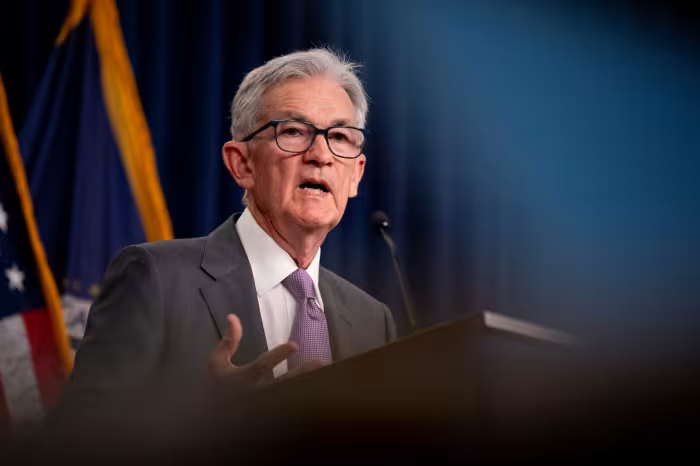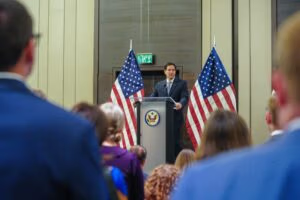Federal Reserve officials at their December meeting expressed heightened concern about inflationary pressures and the potential economic impact of President-elect Donald Trump’s proposed policies. Minutes released Wednesday highlighted a cautious approach to interest rate adjustments due to significant uncertainty surrounding trade, immigration, and fiscal strategies.
Inflation Risks from Trade and Immigration Policy
While Trump was not explicitly named in the minutes, Federal Open Market Committee (FOMC) members cited concerns about how changes in trade and immigration policy might affect the U.S. economy. Trump’s proposals, including tariffs on major trading partners and mass deportations, have created uncertainty about future economic conditions.
“Almost all participants judged that upside risks to the inflation outlook had increased,” the minutes noted, citing stronger-than-expected inflation readings and potential policy shifts under the new administration.
Slower Pace of Rate Cuts
At the meeting, the FOMC lowered the benchmark federal funds rate to a target range of 4.25%-4.5%, marking a full percentage point reduction since September. However, officials scaled back their outlook for additional cuts in 2025, reducing expected reductions from four to two, assuming quarter-point increments.
“In discussing the outlook for monetary policy, participants indicated that the Committee was at or near the point at which it would be appropriate to slow the pace of policy easing,” the minutes stated.
Officials agreed that the current rate was closer to its “neutral value” than when easing began in September, and they emphasized a careful, data-dependent approach moving forward.
Economic and Inflationary Conditions
The decision to proceed cautiously was influenced by several factors:
- Inflation readings exceeding the Fed’s 2% target, with core inflation at 2.4% in November and 2.8% including food and energy.
- Strong consumer spending and a stable labor market.
- Above-trend GDP growth through 2024.
A majority of FOMC participants noted that with monetary policy still restrictive, the Fed could afford to take time to assess evolving economic conditions. However, internal forecasts suggest inflation may not return to 2% until 2027, with near-term risks remaining to the upside.
Navigating Uncertainty
Chair Jerome Powell likened the Fed’s current situation to “driving on a foggy night or walking into a dark room full of furniture,” underscoring the cautious tone.
Minutes reflected this sentiment, stating that “the current high degree of uncertainty made it appropriate for the Committee to take a gradual approach as it moved toward a neutral policy stance.”
The Road Ahead
The Fed’s “dot plot” of members’ expectations indicated plans for two additional rate cuts in 2026 and possibly more in subsequent years, bringing the long-term federal funds rate to 3%.
Officials emphasized that future policy moves would depend on economic data rather than a predetermined schedule. As uncertainty persists over Trump-era policies and their potential impacts, the Fed’s careful approach aims to balance inflation risks with economic stability.





